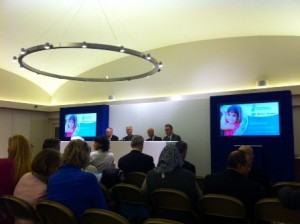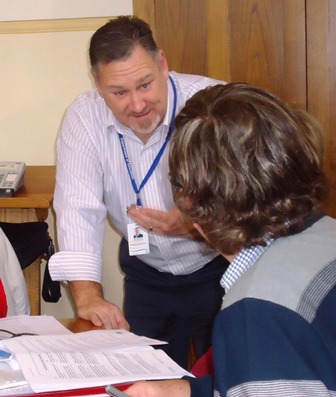London Annual Deep Learning Forum, January 2014.
It was a pleasure and privilege to be a part of this week as a learner and facilitator.
www.newpedagogies.org hosts an outline of the partnership, including two whitepapers, Towards a New End: New Pedagogies for Deep Learning, and deeper insights into uncovering Deep Learning in A Rich Seam: How New Pedagogies find Deep Learning.
There is little doubt that education globally is at an inflection point. Although technology holds great potential, too often it saps productivity and discourages critical thinking. New Pedagogies for Deep Learning: A Global Partnership will develop deep learning competencies that go BEYOND 21st century skills.
The goal is to implement deep learning across whole education systems that are enabled by new pedagogies and accelerated by technology, and to include skills that prepare all learners to be compassionate global citizens who have the ability to communicate effectively, think critically and collaborate to create knowledge and solve real-world problems in an increasingly complex and connected world.
Building on the work begun in Hong Kong in November, clusters met to dig deeper into planning for implementation in their local contexts. Our Australian cluster focussed on the logistics of implementation across 20 Tasmanian and 80 Victorian schools, with school selection to be completed by the end of February.
Highlight of the week was the Partnership Global Launch featuring Michael Fullan, Andreas Schleicher and Peter Hill.
 And Peter’s observation “New Pedagogies – Why NOW? Because we can.”
And Peter’s observation “New Pedagogies – Why NOW? Because we can.”
Michael Fullan talked us through the push and pull factors influencing education, and making change inevitable. “There is a grand convergence spontaneously erupting. I think it is a natural dynamic of push and pull. The push, to put it directly, is a combination of the boredom and alienation of students and teachers. Students won’t wait, and teachers can’t wait. It is simply intolerable for students and teachers to be at school every day when increasing numbers of them would rather be somewhere else. What kind of existence is that!
On the other hand the digital world is a 24/7 phenomenon of limitless intrigue and consternation. There is something out there but it cannot be fathomed. Humans have stopped evolving physically, but the brain is changing in uncontainable ways. Humankind’s relationship to the universe is becoming seamless. There is no distinction between us and mother nature; between us and what we are creating– digitally, artistically, and spontaneously. We are what we create, and what incubates ineluctably becomes us.
Technology, pedagogy and change dynamics are converging on their own. We cannot stop them but we can take advantage of them to enable and accelerate learning, where learning and living become indistinguishable. This is not a theoretical realm. It is reality.”
The “new pedagogies” are not just instructional strategies – they are powerful models of teaching and learning, enabled and accelerated by increasingly pervasive digital tools and resources and support deep learning at all levels of the education system. “Deep learning” develops the learning, creating and ‘doing’ dispositions that youth need to thrive now and in their futures.
In short, we are in a perfect storm. We have the tools, understandings and strategies to turn the rhetoric around 21st century skills into a concrete reality in contemporary teaching and learning.
Focussing on the twin pillars of capacity building and developing new measures of engagement, attainment and excellence, the NPDL Partnership is ultimately about the evolution of the teaching profession.
To quote my good friend Erika Twani New Pedagogies for Deep Learning is not a pilot. It is the real thing. The time is now. Transform education.
See also “The Plastic Brain” http://dradenozine.wordpress.com/2013/08/25/notes-on-new-pedagogies-for-deep-learning-part-1/ for a great summary of the New Pedagogies whitepaper, and www.newpedagogies.org for more info!

